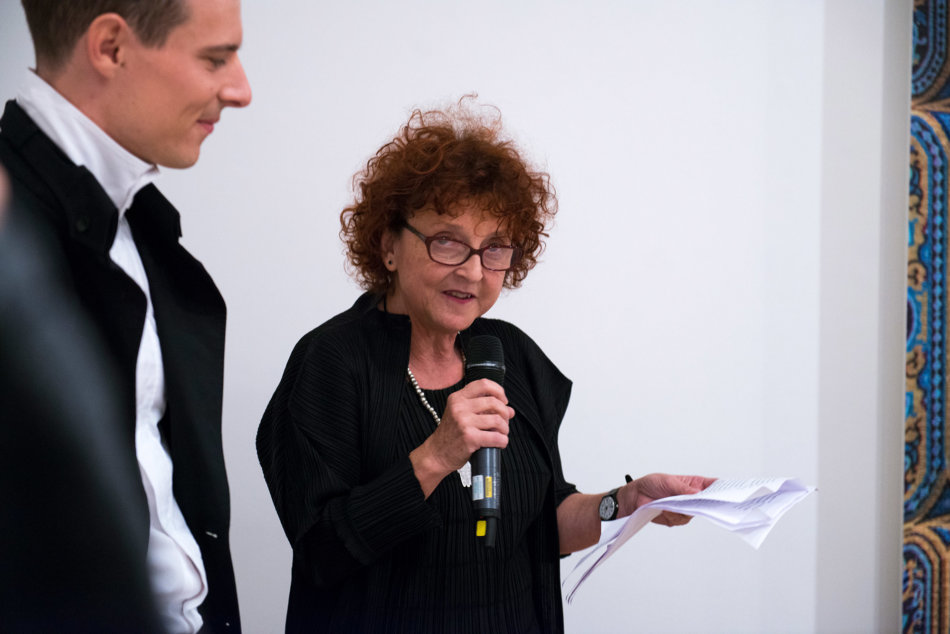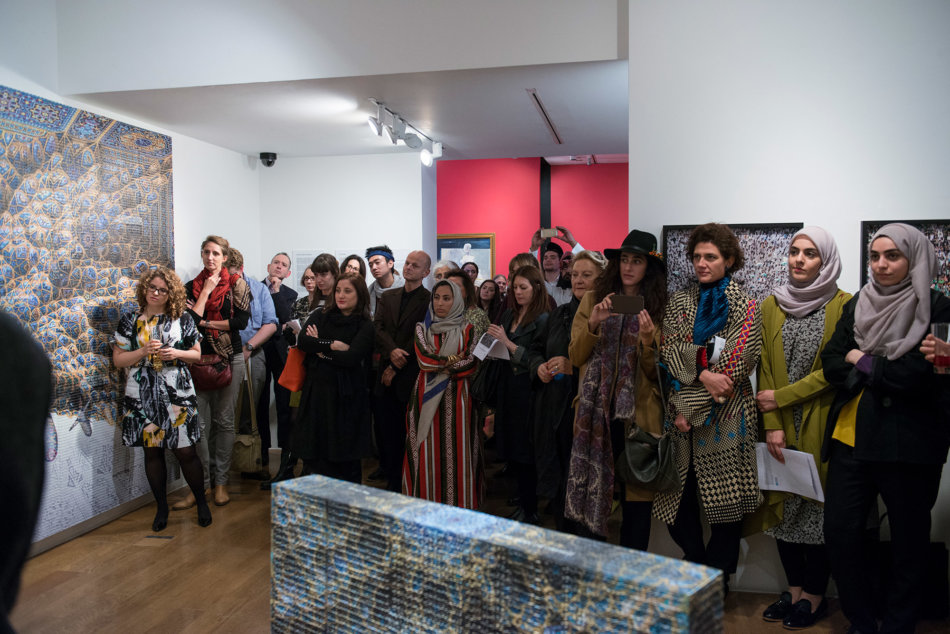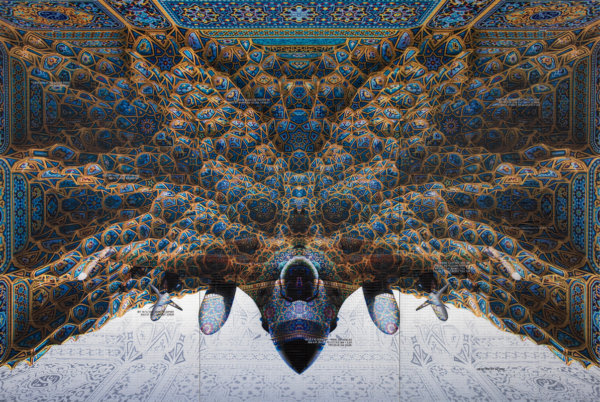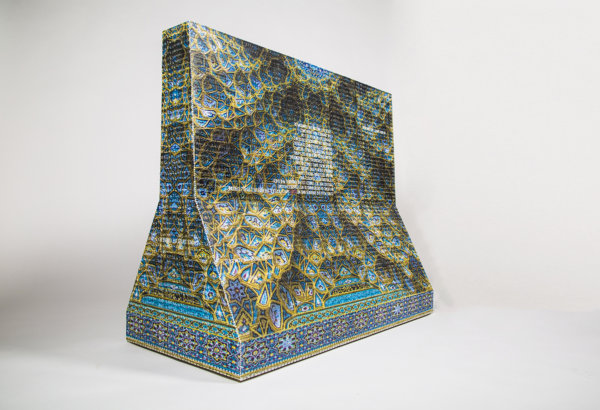Asia House Gallery, London, UK
12 Oct to 18 Oct, 2015
An exhibition showcasing the latest developments in contemporary art from Saudi Arabia
Ricochet, opens on 12 October 2015, presenting new and recent work by leading Saudi artist Abdulnasser Gharem, alongside work by four emerging artists from Saudi Arabia. These emerging artists have been developing their artistic practise at GS, a space established by Abdulnasser Gharem in 2010 in the capital city of Riyadh, in order to teach the young generation (aged 18-25) about contemporary art. Participating artists: Shaweesh, Dhafer Alshehr, Ajlan Gharem, Njoud Alanbari and Abdulnasser Gharem.
Ricochet will showcase some of the latest developments in artistic practise emerging from Saudi Arabia. The participating artists have come together in recent years as part of an organic and progressive movement established through GS. Due to an absence of art schools in the Gulf countries, GS is one of the only places in Saudi Arabia where artists can talk freely and learn about contemporary art. Enabling new forms of cultural expression through a programme of educational activity, GS creates a framework for artists to explore their individual and collective vision of the local culture, and its interaction with the rest of the world.
Taking the concept of ‘ricochet’ as its central theme, the exhibition will investigate the idea that actions taken by a country’s authorities could cause direct, or indirect, chain reactions. Each of the participating artists will be presenting work that culminates as a creative force expressed through a variety of mediums including photography, sculpture, video art, art installations and performances.
Award-winning photographer Dhafer Alshehr will show a new series of photographs reflecting the French philosopher Gustave le Bon’s The Origin of Crowd Psychology, depicting crowds of Muslims engaged in varying social, religious and cultural activities. A highlight from the series includes Prayer(2013), depicting a rare moment of Sunni and Shia Muslims praying together.
Njoud Alanbari is an interior designer who has been hired by the Saudi government to restructure the all-girls schools in Saudi Arabia. Alanbari will present a new video work for Ricochet, exploring issues relating to the regulations forced on women within the educational space in Saudi Arabia.
Ajlan Gharem will exhibit Paradise Has Many Gates (2015), a video documenting the installation of a 10 x 30m cage transformed into the shape of a mosque and installed in the desert outside Riyadh. Videos of performances that took place in the mosque, influenced by the work of French sociologist Pierre Bourdieu, will also form part of Gharem’s presentation.
Young artist Shaweesh will present a new sculptural work in the classical Roman style. The sculpture, entitled Iconoclasm (2015), represents the desire for peaceful practice of religion, in opposition to the use of religion to spread fear.
Abdulnasser Gharem is widely considered to be one of the most influential artists working in the Gulf today. Drawing on his previous experience as a Lieutenant Colonel in the Saudi Arabian army, Gharem’s work reflects on themes of Islamic cultural identity and the need to remove itself from historical shackles to embrace modern day knowledge and thought. Gharem’s use of different forms of arabesques and geometric patterns are merged together to encourage unity in the Islamic world and to prevent the creation of barriers which lead to political disparity and social disruption.
Gharem will present a number of new works, including a new sculpture and a new video work. The video, Aniconism (2015) tackles the taboo subject of female nudity in the Arab World. In this region, depictions of naked women, even in the form of mannequins, are strictly forbidden. The performative work shows 22 Saudi artists using a plastic model of a naked woman for a life class. The figures are arranged in a position that plays on motifs found in Western art history, while commenting on the challenges Saudi artists face, accessing opportunities available to artists in other parts of the world. The work demonstrates the will of artists in the country to overcome barriers and engage with aesthetics at the core of art history. Gharem will also present new sculpture and a painting, titled Ricochet for which the exhibition takes its name, relating to the subject of war and ideology in the Muslim world.
Gharem also presents Traditional Pain Treatment (2015), a new work based on Hejama, an Islamic medicinal ritual intended to cleanse bad blood from the body, a procedure involving wet cupping to draw blood by vacuum. In the work, the body of a man whose back has been illustrated with a map of the Arab world is used, cleansing the country of the “bad blood” (signifying the oil) of the region.






